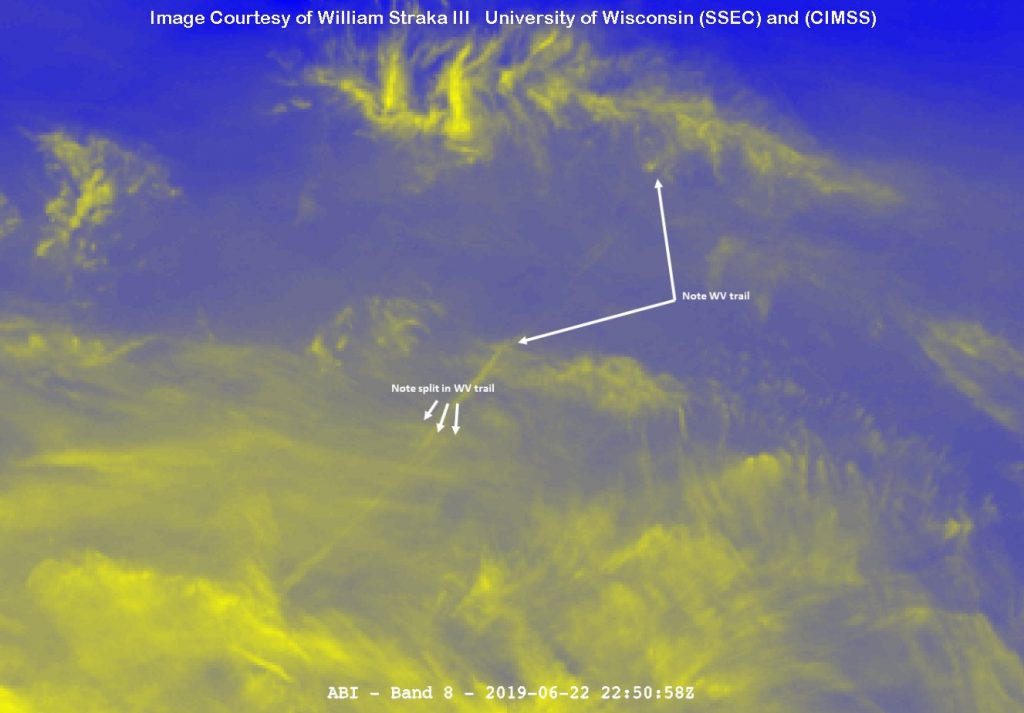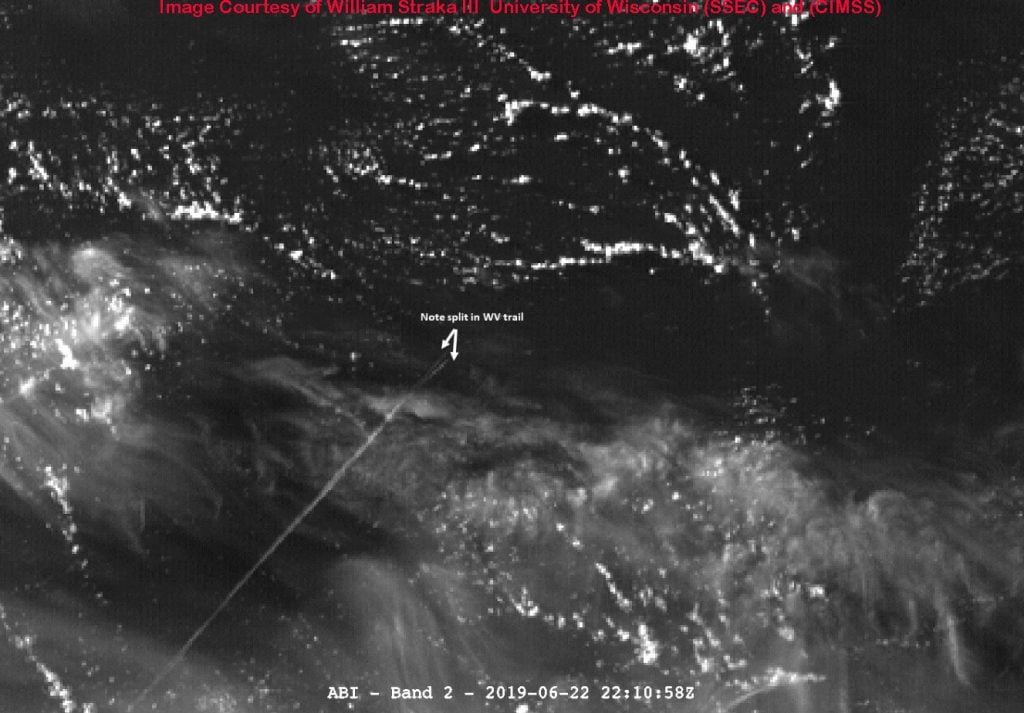On June 22nd at 21:25 UT, a small asteroid (NEOCP A10eoM1/2019 MO) entered Earth’s atmosphere and exploded in broad daylight south of Puerto Rico.
Airwaves recorded by the Comprehensive Nuclear Test Ban Treaty Organization’s infrasound station in Bermuda pegged the blast energy between 3 and 5 kilotons of TNT.
The explosion was clearly visible in images from NOAA’s GOES-16 weather satellite:
Here is the event captured by the GLM. It shows that it was detected just south of Puerto Rico. here is the link to the RAMMB slider: https://t.co/4tYPyk6GmB pic.twitter.com/JeZV7XDKZF
— Frankie Lucena (@frankie57pr) June 25, 2019
Meteor expert Peter Brown of the University of Western Ontario says the infrasound signal is consistent with a “small multi-meter sized near-Earth asteroid.” According to data compiled by NASA’s Center for Near Earth Object Studies, asteroids of this size and energy hit Earth’s atmosphere about once a year. That means it’s rare – but not exceptionally so.
Here is the June 22 event as seen by GLM. While south and East of Jamaica it is actually almost due South of Puerto Rico. Yield from infrasound is about 5 kT, corresponding to a 3m diameter object. #fireball @amsmeteors @IMOmeteors @westernu https://t.co/fLKRUcB4J2
— Peter Brown (@pgbrown) June 25, 2019
The asteroid fragmented as it ripped through the atmosphere. This infrared image from the GOES-16 satellite shows the space rock splitting into at least 3 pieces:

Many more fragments undoubtedly sprayed from the explosion, but the resulting meteorites are now at the bottom of the Caribbean or in the case of dust-sized debris floating on the sea surface. Samples would be very difficult to recover.

This fireball is not a Taurid
Earth is currently approaching the Taurid Swarm – a stream of rocky debris associated with the Tunguska Impact of 1908. Astronomers are eager for the close encounter, which begins in late June, so they can peer inside the swarm in search of dangerous asteroids.
“Based on a preliminary orbit for the fireball, it does not appear to be part of the Taurid swarm,” says Paul Weigert of the University of Western Ontario. “Its orbit is typical of near-Earth asteroids which have escaped from the asteroid belt.”
Very nice catch!! Using available obs of A10eoM1 by F52 & T08, FINDORB finds an IMPACT on June 22, 2019 at 21:31:54UT at Lat +15.02 & Long W68.65 that seems remarkably close to data shared by @pgbrown & @frankie57pr pic.twitter.com/Av8JyorE2O
— Ernesto Guido (@comets77) June 25, 2019
Now a ‘real’ asteroid
M.P.E.C. 2019-M72 issued on 2019 June 25 at 14:59 UT assign the official designation 2019 MO to A10eoM1 with the following comment: The orbit below indicates an impact with the earth’s atmosphere around June 22 21:30 UTC. This is in good agreement with the details determined by D. Farnocchia with the JPL Scout System (June 22 21:32 UTC +/- 15 minutes) and W. Gray (June 22 21:30:33 UTC +/- “a few minutes”).
Rarity
This is only the fourth time in history that an impacting object is observed prior to atmospheric entry:
- The first time it happened was with asteroid 2008 TC3
- The second was with asteroid 2014 AA
- The third was 2018 LA that impacted Earth on 02 June 2018.
- Another space impacting object discovered prior to its to atmospheric entry was WT1190F but it is thought to have been a space debris, possibly the translunar injection module of Lunar Prospector.
[Remanzacco, SpaceWeather, MPEC]











